Indigenous People
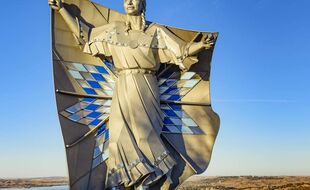
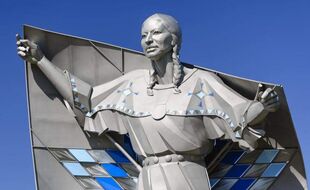
Chamberlain, South Dakota, U.S.
Dignity is a 50 feet high statue located in South Dakota in the US. It is a gift from Norm and Eunabel McKie of Rapid City to celebrate South Dakota's 125th anniversary of statehood. This sculpture was designed by Dale Lamphere to honor the cultures of the Lakota and Dakota people.

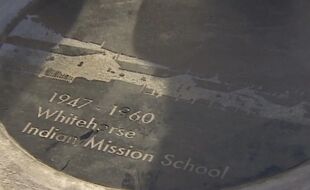
Whitehorse, Canada
This monument is located on the Whitehorse Waterfront, recognizing the Whitehorse residential school survivors. Nine wooden stools circulate the concrete, and each of them is different.
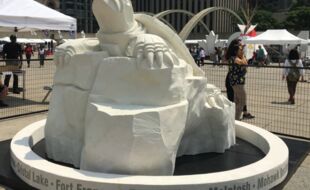
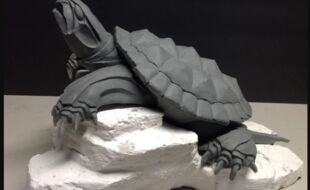
Toronto, Canada
There is a giant turtle sculpture in the center at the Nathan Phillips Square outside the Toronto City Hall. In recognition of residential school survivors, this memorial is one of the Indian Residential School Survivor Legacy projects.
_54f99.jpg?itok=N0-5SBM9)

151 Highway 76, Harpers Ferry, IA
Established in 1949, Effigy Mounds National Monument preserves many American Indian ceremonial mounds found in the shape of animal effigies along the high bluffs and lowlands of the Upper Mississippi River Valley. The 2,526 acre Monument preserves more than 200 mounds, including 31 in the form of bear and bird effigies. The hunter-gatherer culture that built these mounds were known as the Woodland Indians. Archeologists and researchers hypothesize that some of the mounds were built for religious ceremonies, burial ceremonies, as clan symbols, or possibly as a way to connect people to their ancient ancestors and the spiritual world.
Bailic Park (Midleton, Co. Cork in Ireland)
The sculpture commemorates the generosity of the native North American Choctaw Indian Nation during the Great Hunger in Ireland of 1845 - 1851. Moved by news of starvation in 1847, a group of Choctaws in Oklahoma organized a relief fund from their own meager resources, raising $170 to forward on to the US famine relief organization. That would be tens of thousands of dollars in today's money. It was a show of solidarity with the Irish people, having suffered a similar fate themselves just 16 years before after they were forcibly removed from their ancestral lands.
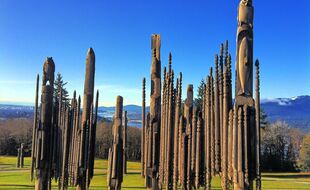
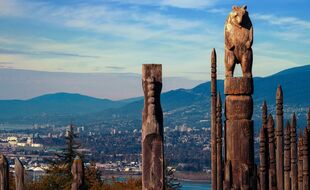
Burnaby Mountain Park
A field of Ainu totem poles at Burnaby Mountain Park, Canada created by an Ainu sculpter from Japan
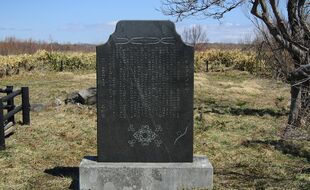
Hachiman Cemetery, Ishikari, Hokkaido, Japan
Cenotaph specifically memorializing the Sakhalin, Russia roots of the Ainu people in Japan. Located in the city of Ishikari Hachiman cemetary.
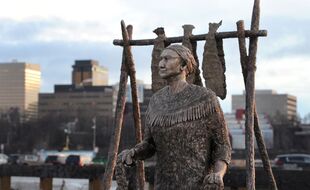
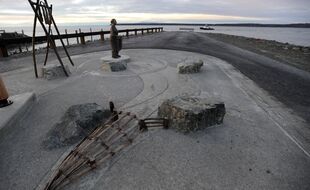
Anchorage, Alaska
The bronze Ahtna woman in the sculpture is modeled after Olga Nikolai Ezi, a well-respected elder in the Native village of Eklutna known as “Grandma Olga.” She and her husband, who was a Dena'ina chief, are credited with settling into Eklutna and establishing much of the tribal lineage.
National Gallery of Australia in Parkes, Australia
The Aboriginal Memorial is a work of contemporary Indigenous Australian art from the late 1980s and is located in the National Gallery of Australia. It comprises 200 traditional hollow log coffins or pole for each year of European settlement, representing the Aboriginal people who died defending their land and denied a proper burial. The poles were made by 43 artists from Ramingining and several surrounding communities in Central Arnhem Land Northern Territory, Australia.
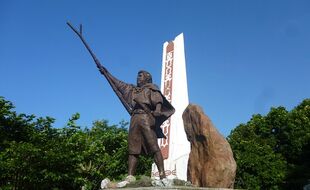
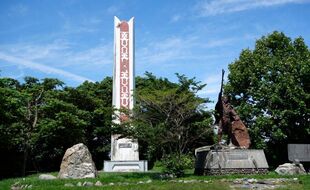
Mauta Park, Shinhidaka, Hokkaido, Japan
Located at Mauta Park in Hokkaido, Japan
